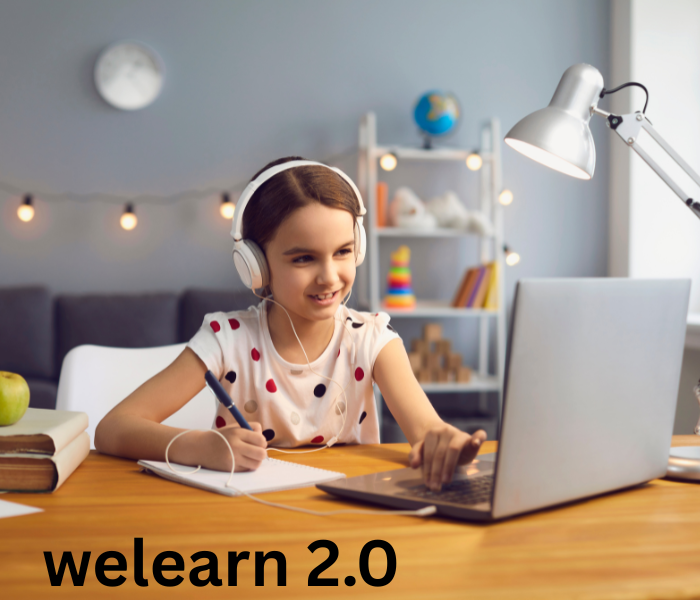Introduction: The Next-Generation Learning Ecosystem
WeLearn 2.0 represents a paradigm shift in digital education, moving beyond static content delivery to create dynamic, adaptive learning experiences. Designed for K-12 schools, universities, corporations, and lifelong learners, this platform integrates artificial intelligence, collaborative tools, and mobile-first design to address diverse educational needs in 2025. Unlike traditional learning management systems (LMS), welearn wendys 2.0 prioritizes active engagement over passive consumption, fostering curiosity and self-directed growth.
Core Functionality and Technical Architecture
AI-Driven Personalization
- Adaptive Learning Paths: Algorithms analyze user behavior to adjust content difficulty, format (video, text, simulation), and pacing in real-time. For example, a student struggling with calculus might receive interactive visualizations instead of textbook excerpts.
- Predictive Interventions: The system flags at-risk learners by detecting engagement dips (e.g., incomplete modules or declining quiz scores) and triggers personalized nudges or tutor support.
Immersive Learning Tools
- Gamification: Badges, leaderboards, and narrative-driven “quests” transform skill acquisition into engaging challenges. Corporate trainees at Fortune 500 companies report higher completion rates with these features.
- Virtual Classrooms: Live video sessions with interactive whiteboards and breakout rooms replicate in-person collaboration, while asynchronous discussion boards enable global peer feedback.
Accessibility and Inclusivity
- Multi-Language Support: Courses auto-translate into 25+ languages, with dyslexia-friendly fonts and screen-reader compatibility.
- Offline Mode: Users in low-bandwidth regions (e.g., refugee camps in Jordan) download materials for offline use, syncing progress when reconnected.
Table: Evolution from WeLearn 1.0 to 2.0
| Feature | WeLearn 1.0 | WeLearn 2.0 |
|---|---|---|
| Content Delivery | Static videos + PDFs | AI-generated interactive modules |
| Assessment | Standardized quizzes | Real-world problem simulations |
| Accessibility | Limited compliance | WCAG 2.2 certified |
| Collaboration | Basic forums | Live role-based group projects |
Impact Across Educational Sectors
- Formal Education
- K–12 & Universities: Thailand’s Ministry of Education reported a surge in student engagement after implementing WeLearn 2.0 for hybrid learning. Teachers create differentiated assignments (e.g., advanced physics problems for gifted students), while analytics track concept mastery.
- Higher Education: Universities like Paris-Saclay use the platform’s AI to map curricula to UN Sustainable Development Goals (SDGs), connecting academic theory to global challenges.
- Corporate Training
- Onboarding: Companies like SAP reduced new-hire training time using customized learning paths for technical and soft skills.
- Compliance & Upskilling: Interactive simulations train employees in safety protocols, while “skill trackers” validate competencies for promotions.
- Lifelong and Global Learning
- Displaced Youth: NGOs in Rwanda achieved high course completion rates by delivering low-bandwidth vocational training via wendy’s 2.0 welearn.
- Adult Learners: Micro-credentials in data science or leadership are stackable into professional portfolios, with blockchain-verified certificates.
User Experience and Interface Design
- Dashboard Customization: Learners see personalized widgets displaying goal progress, upcoming deadlines, and peer activity feeds.
- Voice/Gesture Controls: Hands-free navigation assists users with mobility limitations, while “learning mood modes” adjust screen contrast for reduced eye strain.
- Content Creation Suite: Educators build courses using drag-and-drop templates, AI-assisted writing tools, and royalty-sharing options for third-party contributors.
Challenges and Mitigation Strategies
- Digital Divide: Limited device/internet access in rural areas hinders adoption. Solution: Partnerships with governments deploy offline-enabled tablets and solar-powered charging stations.
- Educator Resistance: Teachers unfamiliar with AI tools underutilize features. Solution: Built-in professional development modules and 24/7 AI coaching.
- Data Privacy Concerns: GDPR-compliant encryption and transparent data dashboards let users control analytics sharing.
Future Roadmap: 2025–2026
- Immersive Technologies: VR labs for engineering simulations and AR anatomy overlays in medical training.
- Neurodiverse Support: AI coaches will adapt content delivery for autistic or dyslexic learners using haptic feedback wearables.
- Climate-Adaptive Learning: Courses will adjust schedules based on regional weather (e.g., pausing modules during heatwaves in vulnerable areas).
Testimonials and Efficacy Metrics
“WeLearn 2.0 helped our students view education as a journey, not a chore. Their critical thinking skills improved dramatically.” — Singapore Secondary School Teacher
“As a freelance designer, I earned certifications in UX through bite-sized lessons. The platform’s flexibility let me learn during commutes.” — Adult Learner, Kenya
Table: Performance Improvements
| Metric | Improvement | Context |
|---|---|---|
| Student Engagement (K–12) | 32% increase | Thailand Ministry of Education |
| Corporate Training Completion | 30% faster | Fortune 500 pilot programs |
| Knowledge Retention (6 months) | 78% vs. 42% | Comparative study vs. traditional LMS |
Conclusion: Education as a Dynamic, Human-Centric Experience
WeLearn 2.0 transcends conventional e-learning by merging technological sophistication with pedagogical empathy. Its success lies not in replacing educators, but in amplifying their impact through data-driven insights and democratized access. As digital inequities narrow and AI ethics evolve, platforms like welearn wendys 2.0 will redefine lifelong learning—one adaptive module at a time.

